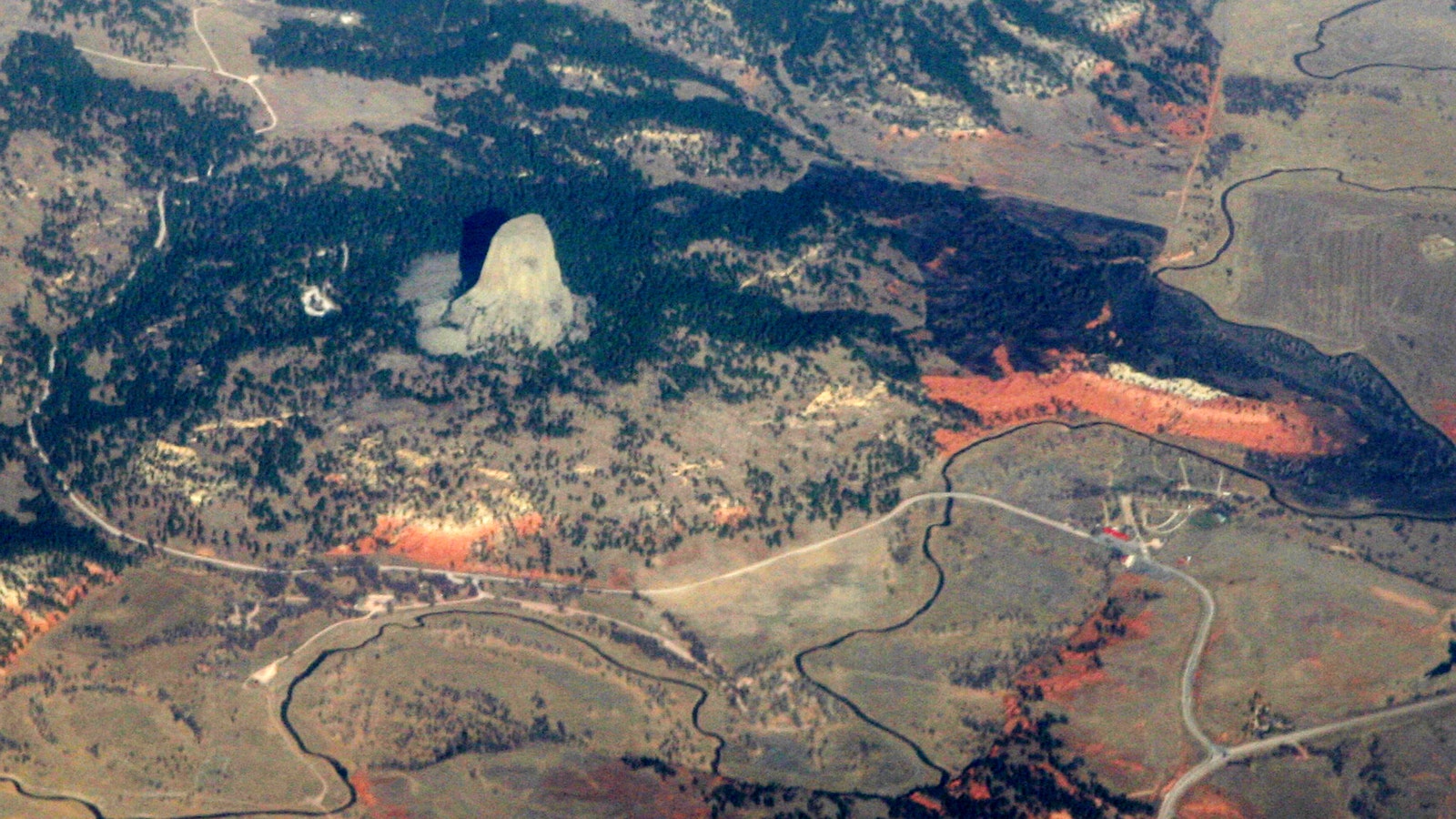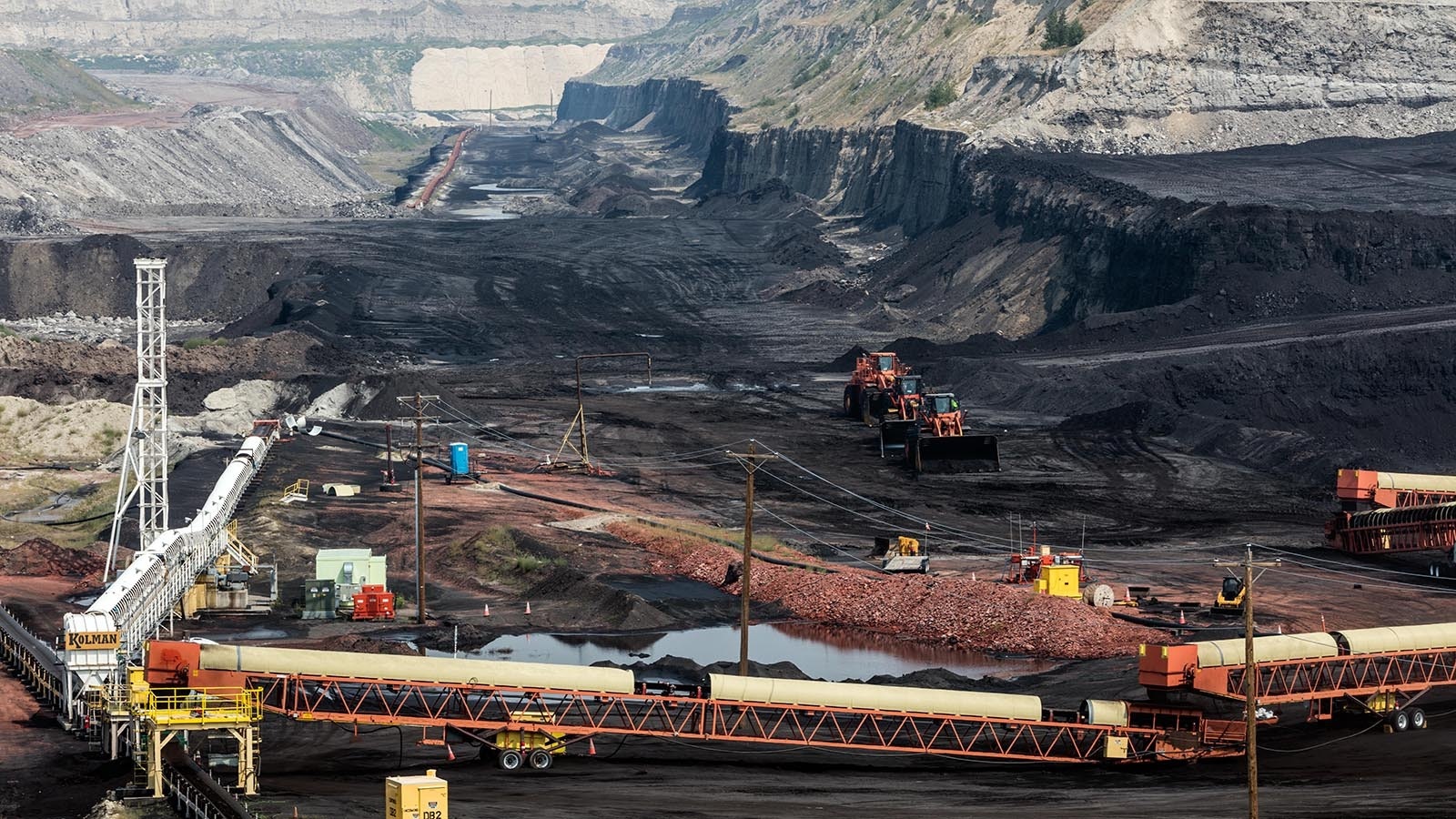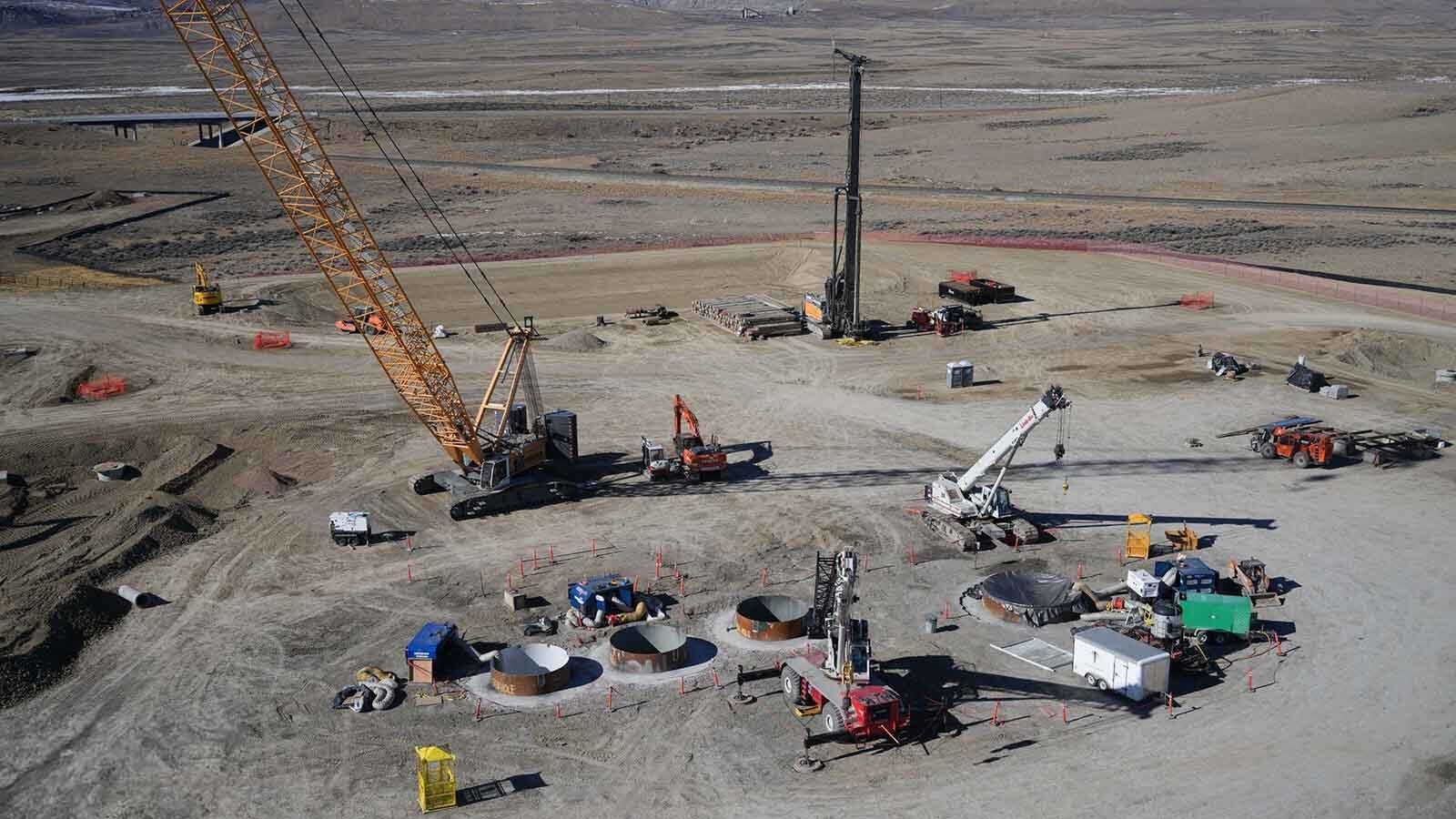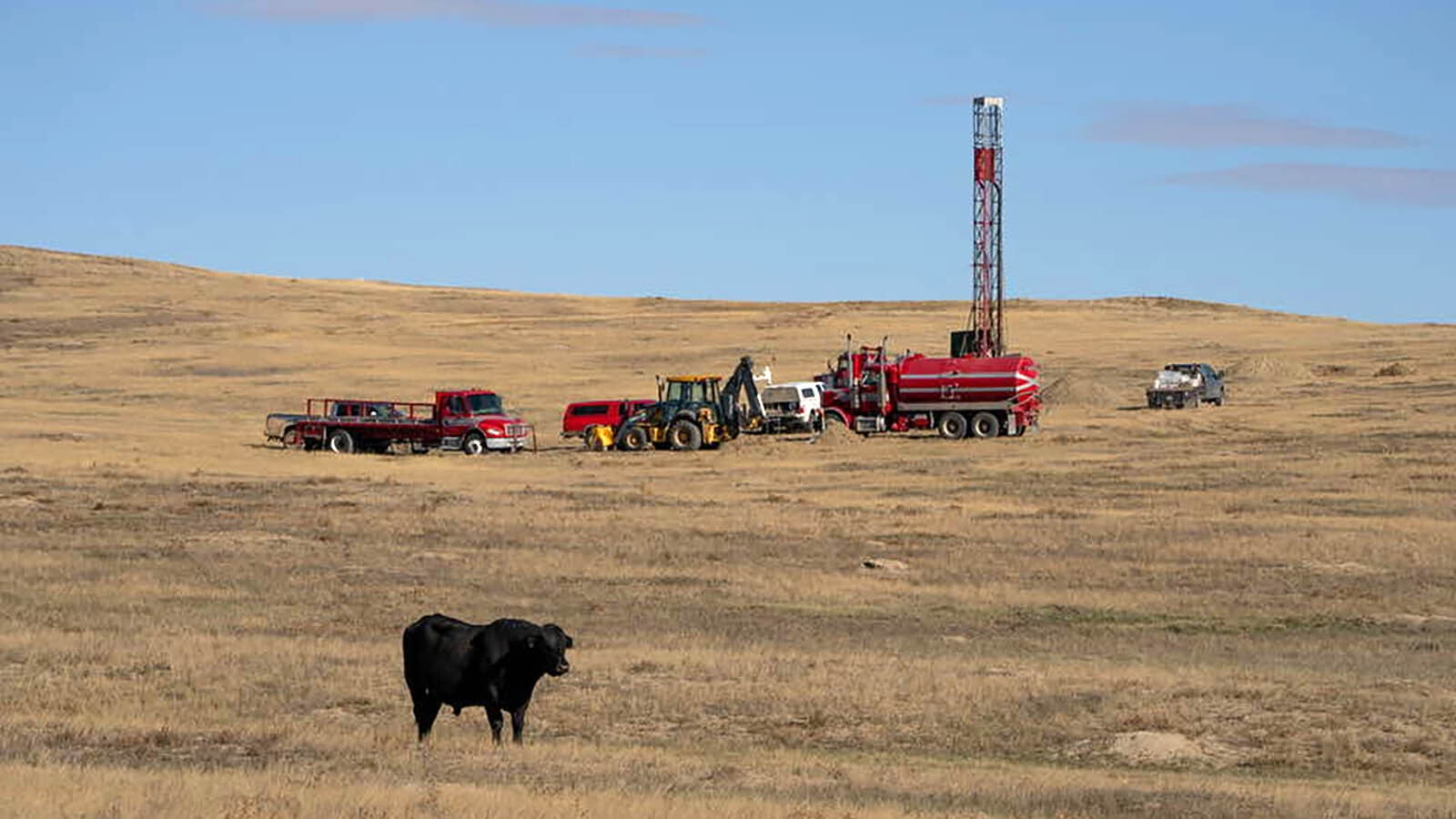PacifiCorp recently released its latest Integrated Resource Plan (IRP). The document spells out where Wyoming's largest utility plans to get its energy from for the next two decades. The company plans to increase wind and solar resources, as well as pumped and battery storage, while reducing its coal-fired generation capacity.
The plan has raised a number of concerns over the impacts on wildlife from increased wind projects, the loss of jobs, decreased electrical reliability, and impacts to the cost of electricity.
Coal To Natural Gas
PacifiCorp's 2023 resource strategy is to convert two units at the Rock Springs Jim Bridger plant to natural gas by 2024. By 2030, the utility wants to convert the other two units at the plant to natural gas.
Two units at the Naughton plant in Kemmerer are set to be converted to natural gas by 2026.
The company plans to shut down three units at its Glenrock Dave Johnston plant by 2028, and sell the Colstrip power plant in Montana by 2030.
The company wants to shut down its Hunter Power Plant in Utah by 2032, and the Huntington Power Plant by 2032.
Should the plan be carried out, 2,614 megawatts of coal capacity will be gone.
Bitter Pill
Sweetwater County Commissioner Island Richards in a statement called the news that the utility would eliminate most coal-fired generation "unwelcome but not unexpected" and "a bitter pill."
The decision to convert some units to gas was a "partial reprieve," Richards said.
"Clearly, the jobs that natural gas creates aren't as extensive as the jobs that coal mining creates," Richards told Cowboy State Daily.
In the statement, Richards noted other economic activities in the county, such as trona mining, carbon capture and manufacturing, help provide employment.
"It's not the end of the world for Sweetwater County," Richards said in an interview. "We have other things in the works. We're diversifying our economy, and that can hopefully make up for some, if not all, of those jobs."
Fossil Fuel
Kevin Kilty, a retired University of Wyoming adjunct professor of engineering, told Cowboy State Daily that PacifiCorp is planning to keep some coal assets operating longer than was planned in its 2021 IRP, and the company is planning to convert more coal plants to gas than the previous plan estimated. He said the changes may reflect a realization that a grid can't run on wind and solar alone.
"They haven't stated explicitly, 'We learned that we can't run the grid without these fossil fuels,' but you know darn well that's the reason," Kilty said.
In its latest long-term resource adequacy assessment, the North American Electric Reliability Corporation, a nonprofit charged with overseeing the reliability of the nation's grids, found that the areas serving Wyoming - the Southwest Power Pool and Western Power Pool - are at elevated risk to not have enough electricity during periods of extreme weather, such as cold snaps and heat waves.
The assessment attributed much of the increased risk of supply shortfalls to increased reliance on wind and solar, coupled with decreased fossil fuel-powered generation.
Storage
PacifiCorp's latest IRP called for an increase in the amount of storage capacity to be placed on the grid. Not including solar resources that will be paired with storage capacity, the 2021 plan estimated the company would install 5,546 megawatts of battery storage and pumped storage resources. The 2023 plan jacked that up to 7,400 megawatts.
Kilty said that it's difficult to tell a lot about those numbers because the amount of storage capacity a grid has needs to be measured in watt hours. Stating how many watts of storage they are planning is "misleading," Kilty said.
While eliminating a lot of reliable resources from its portfolio, Pacificorp is planning on building out 20,000 megawatts of wind and solar resources. Wind and solar can drop to zero watts at any moment and stay that way for days at a time, Kilty said. So unless you have storage capacity lasting as long as potential wind and solar droughts, you won't have enough resources on the grid to keep the lights on.
Transmission Network
The latest IRP plans massive build outs of transmission lines to connect all the various wind and solar farms to the grid. While the plan states the lines will make the grid more resilient, Kilty is skeptical.
The argument is that, if the network is wide enough, there will be wind farms or solar farms somewhere where the wind is blowing and the sun is shining.
"That gets you into the problem that that area has to power the rest of the grid. So you have to overbuild resources and overbuild the transmission capacity, because you have to send it all over the place," Kilty explained.
He called it a "Sisyphean task," referring to the Greek myth of Sisyphus, who was condemned to roll a rock up to the top of a mountain, where it would just roll down again.
Wildlife Impacts
Anne Brande, executive director of the Albany County Conservancy, told Cowboy State Daily she's concerned about the impacts to wildlife and cultural and historic sites from all those wind farms.
She said a lot of the interest in building these resources is driven by federal tax incentives. Wind energy has an impact on eagle populations, as well as other wildlife, Brande said, and these externalities, as they're called, are not being fully considered in the permitting process for wind farms.
"They're not looking at it holistically," Brande said.
There are a dozen wind projects in Wyoming under development. Power Company of Wyoming is planning a 3,000-megawatt wind farm spread over 1,500 acres.
PacifiCorp's IRP called for 9,111 megawatts of wind energy. Assuming a similar amount of density as the Power Company of Wyoming project, the new wind projects in the IRP would spread out over at least 4,500 acres, which doesn't include solar farms. And that's just for one utility.
Brande said the media coverage on the impacts to wildlife of all this industrial development in rural areas largely gets ignored.
"It's a disaster waiting to happen, Brande said.
Sufficient Needs
David Eskelsen, spokesperson for PacifiCorp, told Cowboy State Daily the planning and analysis that goes into the IRP seeks to ensure that there will be enough resources, as federal and state regulations require, at the lowest cost for the company's customers.
The plan's analysis and conclusions provide sufficient needs for customers both near-term and over the 20-year planning horizon, Eskelsen said. The plan includes provisions to ensure system reliability as federal and state regulations require. He said these plans are also regularly updated every other year, with shorter updates every year, so that the company can adapt to changing conditions.
"In this way, the company can adapt and respond to changes in customer needs, energy technology and regulatory requirements as needed," Eskelsen said.
Electricity Rates
Kilty said that wrestling with increasing random resources, which require overbuilding of wind and solar farms, as well as transmission lines, ultimately increases costs to the consumer.
The plan says that PacifiCorp is leading the way in establishing innovative markets that enable the utility to provide rates 27% below the national average.
Kilty said that, according to data from the U.S. Energy Information Administration, for the past 23 years, Wyoming has been between 10% and 30% of the national average. So, it's not likely Wyoming's low rates have anything to do with PacifiCorp and are just the result of Wyoming using so much coal-fired generation.
Eskelsen said the plan "seeks the least-cost least-risk portfolio of resources that are in the best interest of our customers."
Capital investment in any resource type, Eskelsen said, has an eventual impact on customer rates. Only after investment is permitted, constructed and serving customers can PacifiCorp seek investment recovery from state regulatory commissions through a general rate request.
Demand Response
The company's plan also calls for demand response to help manage the gap between supply and demand.
Demand response lowers demand on the grid during times of high demand.
Large users of power will contract with the utility to allow their power to be cut off when demand on the grid gets too high, in exchange for lower rates.
So, for example, where there's a lot of irrigation motors, those will get cut off for a few hours to help lower the demand.
The other way the utility plans to manage demand is through energy efficiency programs.
Kilty questions if PacifiCorp is thinking realistically about how much these efforts can shed loads on the grid.
He said if the company isn't estimating all of this accurately, it is just "unicorns and fairy dust."





